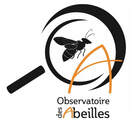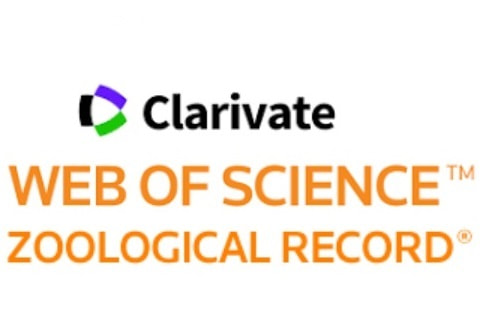Revue d'Hyménoptérologie
Journal of Hymenopterology
ISSN 2727-3806
ARTICLE |
The previous concept of the cosmopolitan pest ant Tapinoma melanocephalum (Fabricius, 1793) includes two species (Hymenoptera: Formicidae: Tapinoma)
|
Bernhard Seifert
|
Citation
Seifert, B. (2022). The previous concept of the cosmopolitan pest ant Tapinoma melanocephalum (Fabricius, 1793) includes two species (Hymenoptera: Formicidae: Tapinoma). Osmia, 10: 35–44. https://doi.org/10.47446/OSMIA10.4
Received 19 December 2021 - Accepted 13 June 2022 - Published (online) 17 June 2022
Indexation • Archivage - Archiving
Abstract
Tapinoma melanocephalum (Fabricius, 1793), known under the vernacular name Ghost Ant and being a widely distributed cosmopolitan tramp species with significant pest status, has been considered long-since to represent a single species. Yet, investigation of 83 worker samples from the whole globe provided evidence that the Ghost Ant consists of two species: 8.4 % of the samples belonged to the new species T. pithecorum sp. nov. whereas 91.6 % were classified as T. melanocephalum. Absence of mixed samples indicates that T. melanocephalum and T. pithecorum sp. nov. do not represent morphs of the same species. T. pithecorum sp. nov. is known from a greenhouse finding in Germany and outdoor populations from the south of the Arabian Peninsula, Pakistan, India, Malaysia and the Fiji and Christmas Islands. The phenotypical separation of the new species from other minute Tapinoma species of Orientalic, Indo-Australian and Australasian origin is very clear, allowing identification even by evaluation of z-stack photos. A detailed argumentation is presented that Tapinoma pellucida (Smith, 1857), T. coronatum (Forel, 1908), T. malesianum (Forel, 1913), T. australis (Santschi, 1928), T. australe (Santschi, 1928), T. luffae (Kurian, 1955), T. wallacei (Guerrero, 2018) and T. jerdoni nom. nov. should be considered as synonyms of T. melanocephalum. Synomymies of T. melanocephalum and T. pithecorum sp. nov. with T. indicum (Forel, 1895) and Tapinoma minutum (Mayr, 1862) are clearly excluded by morphometric data. Diagrams of principal component analyses, photos, a key as well as a morphometric table to separate these four species are presented. In a concluding section, is argued that the true number of species related to these four species is much larger than presently known and a warning is given regarding careless use of pigmentation characters in ant identification.
Keywords
Ghost Ant, sister species, tramp species, numeric morphology-based, alpha-taxonomy, stereomicroscopy, photo evaluation, color polymorphism, Tapinoma pithecorum sp. nov., Tapinoma jerdoni nom. nov.
Titre (traduction)
La précédente conception de la fourmi ravageuse cosmopolite Tapinoma melanocephalum (Fabricius, 1793) comprend deux espèces (Hyménoptères : Formicidae : Tapinoma)
Résumé
Tapinoma melanocephalum (Fabricius, 1793), une espèce cosmopolite connue sous le nom vernaculaire de fourmi fantôme, au statut de ravageur et largement distribuée, a longtemps été considérée comme n’étant qu’une seule espèce. Pourtant, une enquête sur 83 échantillons d’ouvrières du monde entier a fourni la preuve que la fourmi fantôme se compose de deux espèces : 8,4 % des échantillons appartenaient à la nouvelle espèce T. pithecorum sp. nov. tandis que 91,6 % ont été classés comme T. melanocephalum. L’absence de spécimens intermédiaires indique que T. melanocephalum et T. pithecorum sp. nov. ne représentent pas des morphes de la même espèce. T. pithecorum sp. nov. est connue d’une serre située en Allemagne et par des populations vivant en extérieur du sud de la péninsule arabique, du Pakistan, de l’Inde, de la Malaisie et des îles Fidji et Christmas. La séparation phénotypique de la nouvelle espèce des autres espèces de Tapinoma d’origine orientale, indo-australienne et australasienne est très claire. Une argumentation est présentée au sujet de Tapinoma pellucida (Smith, 1857), T. coronatum (Forel, 1908), T. malesianum (Forel, 1913), T. australis (Santschi, 1928), T. australe (Santschi, 1928), T. luffae (Kurian, 1955), T. wallacei (Guerrero, 2018) et T. jerdoni nom. nov. qui doivent être considérées comme des synonymes de T. melanocephalum. Les synomymies de T. melanocephalum et T. pithecorum sp. nov. avec T. indicum (Forel, 1895) et Tapinoma minutum (Mayr, 1862) ont été exclues par les données morphométriques. Dans une partie conclusive, il est soutenu que le nombre réel d’espèces en lien avec ces quatre espèces est beaucoup plus grand que ce que l’on connaît actuellement et un avertissement est donné au sujet de l’utilisation des caractères de pigmentation dans l’identification des fourmis.
Mots-clefs
Fourmi fantôme, espèces-sœurs, alpha-taxonomie numérique à base morphologique, stéréomicroscopie, analyse d’image, polymorphisme de couleur, Tapinoma pithecorum sp. nov., Tapinoma jerdoni nom. nov.
References
Seifert, B. (2022). The previous concept of the cosmopolitan pest ant Tapinoma melanocephalum (Fabricius, 1793) includes two species (Hymenoptera: Formicidae: Tapinoma). Osmia, 10: 35–44. https://doi.org/10.47446/OSMIA10.4
Received 19 December 2021 - Accepted 13 June 2022 - Published (online) 17 June 2022
Indexation • Archivage - Archiving
- DOI: https://doi.org/10.47446/OSMIA10.4
- Zoobank (ICZN): http://zoobank.org/DF2B0B4D-D931-405C-844D-C91BBD6647ED
- HAL (CNRS-INRAE): https://hal.archives-ouvertes.fr/hal-03696331
- Zenodo (CERN): https://zenodo.org/record/6647327
Abstract
Tapinoma melanocephalum (Fabricius, 1793), known under the vernacular name Ghost Ant and being a widely distributed cosmopolitan tramp species with significant pest status, has been considered long-since to represent a single species. Yet, investigation of 83 worker samples from the whole globe provided evidence that the Ghost Ant consists of two species: 8.4 % of the samples belonged to the new species T. pithecorum sp. nov. whereas 91.6 % were classified as T. melanocephalum. Absence of mixed samples indicates that T. melanocephalum and T. pithecorum sp. nov. do not represent morphs of the same species. T. pithecorum sp. nov. is known from a greenhouse finding in Germany and outdoor populations from the south of the Arabian Peninsula, Pakistan, India, Malaysia and the Fiji and Christmas Islands. The phenotypical separation of the new species from other minute Tapinoma species of Orientalic, Indo-Australian and Australasian origin is very clear, allowing identification even by evaluation of z-stack photos. A detailed argumentation is presented that Tapinoma pellucida (Smith, 1857), T. coronatum (Forel, 1908), T. malesianum (Forel, 1913), T. australis (Santschi, 1928), T. australe (Santschi, 1928), T. luffae (Kurian, 1955), T. wallacei (Guerrero, 2018) and T. jerdoni nom. nov. should be considered as synonyms of T. melanocephalum. Synomymies of T. melanocephalum and T. pithecorum sp. nov. with T. indicum (Forel, 1895) and Tapinoma minutum (Mayr, 1862) are clearly excluded by morphometric data. Diagrams of principal component analyses, photos, a key as well as a morphometric table to separate these four species are presented. In a concluding section, is argued that the true number of species related to these four species is much larger than presently known and a warning is given regarding careless use of pigmentation characters in ant identification.
Keywords
Ghost Ant, sister species, tramp species, numeric morphology-based, alpha-taxonomy, stereomicroscopy, photo evaluation, color polymorphism, Tapinoma pithecorum sp. nov., Tapinoma jerdoni nom. nov.
Titre (traduction)
La précédente conception de la fourmi ravageuse cosmopolite Tapinoma melanocephalum (Fabricius, 1793) comprend deux espèces (Hyménoptères : Formicidae : Tapinoma)
Résumé
Tapinoma melanocephalum (Fabricius, 1793), une espèce cosmopolite connue sous le nom vernaculaire de fourmi fantôme, au statut de ravageur et largement distribuée, a longtemps été considérée comme n’étant qu’une seule espèce. Pourtant, une enquête sur 83 échantillons d’ouvrières du monde entier a fourni la preuve que la fourmi fantôme se compose de deux espèces : 8,4 % des échantillons appartenaient à la nouvelle espèce T. pithecorum sp. nov. tandis que 91,6 % ont été classés comme T. melanocephalum. L’absence de spécimens intermédiaires indique que T. melanocephalum et T. pithecorum sp. nov. ne représentent pas des morphes de la même espèce. T. pithecorum sp. nov. est connue d’une serre située en Allemagne et par des populations vivant en extérieur du sud de la péninsule arabique, du Pakistan, de l’Inde, de la Malaisie et des îles Fidji et Christmas. La séparation phénotypique de la nouvelle espèce des autres espèces de Tapinoma d’origine orientale, indo-australienne et australasienne est très claire. Une argumentation est présentée au sujet de Tapinoma pellucida (Smith, 1857), T. coronatum (Forel, 1908), T. malesianum (Forel, 1913), T. australis (Santschi, 1928), T. australe (Santschi, 1928), T. luffae (Kurian, 1955), T. wallacei (Guerrero, 2018) et T. jerdoni nom. nov. qui doivent être considérées comme des synonymes de T. melanocephalum. Les synomymies de T. melanocephalum et T. pithecorum sp. nov. avec T. indicum (Forel, 1895) et Tapinoma minutum (Mayr, 1862) ont été exclues par les données morphométriques. Dans une partie conclusive, il est soutenu que le nombre réel d’espèces en lien avec ces quatre espèces est beaucoup plus grand que ce que l’on connaît actuellement et un avertissement est donné au sujet de l’utilisation des caractères de pigmentation dans l’identification des fourmis.
Mots-clefs
Fourmi fantôme, espèces-sœurs, alpha-taxonomie numérique à base morphologique, stéréomicroscopie, analyse d’image, polymorphisme de couleur, Tapinoma pithecorum sp. nov., Tapinoma jerdoni nom. nov.
References
- Andrés, J. A. & A. Cordero (1999). The inheritance of female color morphs in the damselfly Ceriagrion tenellum (Odonata, Coenagrionidae). Heredity, 82(3): 328–335. https://doi.org/10.1038/sj.hdy.6884930
- Barion, A. A. & R. C. Saxena (1987). Inheritance of body color in the brown planthopper, Nilaparvata lugens. Entomologia Experimentalis et Applicata, 43(3): 267–270. https://doi.org/10.1111/j.1570-7458.1987.tb02220.x
- Bustos, X. & D. Cherix (1998). Contribution à la biologie de Tapinoma melanocephalum (Fabricius) (Hymenoptera, Formicidae). Actes des Colloques Insectes Sociaux, 11: 95–101. https://cataglyphis.fr/Actes-SF-UIEIS/ACTES-COLLOQUES-INSECTES-SOCIAUX-VOL-11-1998/Actes-Colloques-Sf-UIEIS-Vol11-Bustos-Cherix.pdf [accessed 01 June 2022]
- Guerrero, R. J. (2018). Taxonomic identity of the ghost ant, Tapinoma melanocephalum (Fabricius, 1793) (Formicidae: Dolichoderinae). Zootaxa, 4410(3): 497–510. https://doi.org/10.11646/zootaxa.4410.3.4
- Kamura, C. M., M. S. C. Morini, C. J. Figueiredo, O. C. Buenoo & A. E. de C. Campos-Farinha (2007). Ant communities (Hymenoptera: Formicidae) in an urban ecosystem near the Atlantic Rainforest. Brazilian Journal of Biology, 67(4): 635–641. https://doi.org/10.1590/S1519-69842007000400007
- Klotz, J. H, J. R. Mangold, K. M. Vail, L. R. Davis & R. S. Patterson (1995). A Survey of the Urban Pest Ants (Hymenoptera: Formicidae) of Peninsular Florida. The Florida Entomologist, 78(1):109–118. https://doi.org/10.2307/3495674
- Lee, C. Y., C. Y. Lim & I. Darah (2002). Survey on structure-infesting ants (Hymenoptera: Formicidae) in food preparative outlets. Tropical Biomedicine, 19(1–2): 21–26. http://www.chowyang.com/uploads/2/4/3/5/24359966/041.pdf
- Lus, J. J. (1932). An analysis of the dominance phenomenon in the inheritance of the elytra and pronotum color in Adalia bipunctata. Trudy Laboratorii Genetiki, Leningrad, 9: 135–162.
- Majerus, M. E. N. (1998). Melanism: evolution in action. Oxford (UK), xiii + 338 pp.
- Majumdar, K. C., K. Nasuruddin & K. Ravinder (2008). Pink body color in Tilapia shows single gene inheritance. Aquaculture Research, 28(8): 581–589. https://doi.org/10.1046/j.1365-2109.1997.00898.x
- Moreira, D. D. O., V. de Morais, O. Veira-da-Motta, A. E. de C. Campos-Farinha & A. Tonhasca Jr. (2005). Ants as carriers of antibiotic-resistant bacteria in hospitals. Neotropical Entomology, 34(6): 999–1006. https://doi.org/10.1590/S1519-566X2005000600017
- Oliveira, B. R. M., L. Ferreira de Sousa, R. C. Soares, T. C. Nascimento, M. S. Madureira & J. L. Fortuna (2017). Ants as Vectors of Bacteria in Hospital Environments. Journal of Microbiology Research, 7(1): 1–7. https://doi.org/10.5923/j.microbiology.20170701.01
- Santschi, F. (1928a). Chapter « Formicidae ». Insects of Samoa and other Samoan Terrestrial Arthropoda Part V. Hymenoptera. Fasc. 1. British Museum, London, 41–58.
- Santschi, F. (1928b). Nouvelles fourmis d'Australie. Bulletin de la Société Vaudoise des Sciences Naturelles, 56(221): 465–483. https://www.antwiki.org/wiki/images/e/e4/Santschi_1928e.pdf [accessed 01 June 2022]
- Seifert, B. (1997). Formica lusatica n. sp. – a sympatric sibling species of Formica cunicularia and Formica rufibarbis (Hymenoptera Formicidae). Abhandlungen und Berichte des Naturkundemuseums Görlitz, 69(5): 3–16. https://www.antcat.org/references/132275 [accessed 01 June 2022]
- Seifert, B. (2002). A taxonomic revision of the Formica cinerea group (Hymenoptera: Formicidae). Abhandlungen und Berichte des Naturkundemuseums Görlitz, 74(2): 245–272. https://www.antcat.org/references/132267 [accessed 01 June 2022]
- Seifert, B. (2003). The ant genus Cardiocondyla (Insecta: Hymenoptera: Formicidae) a taxonomic revision of the C. elegans, C. bulgarica, C. batesii, C. nuda, C. shuckardi, C. stambuloffii, C. wroughtonii, C. emeryi, and C. minutior species groups. Annalen des Naturhistorischen Museums Wien, Serie B, 104: 203–338. https://www.antcat.org/references/132283 [accessed 01 June 2022]
- Seifert, B. (2018). The Ants of Central and North Europe. Lutra Verlags- und Vertriebsgesellschaft, Tauer (Germany), 408 pp.
- Seifert, B. (2019). A taxonomic revision of the members of the Camponotus lateralis species group (Hymenoptera: Formicidae) from Europe, Asia Minor and Caucasia. Soil Organisms, 91(1):7–32. https://doi.org/10.25674/so-91-1-02
- Seifert, B. (2020). A taxonomic revision of the Palaearctic members of the subgenus Lasius s. str. (Hymenoptera, Formicidae). Soil Organisms, 92(1): 15–94. https://doi.org/10.25674/so92iss1pp15
- Seifert, B, I. Okita & J. Heinze (2017). A taxonomic revision of the Cardiocondyla nuda group (Hymenoptera: Formicidae). Zootaxa, 4290(2): 324–356. https://doi.org/10.11646/zootaxa.4290.2.4
- Singh, S., W. Colombo, S. Shreevihar, M. Faisal, V. P. Pandey & C. M. Tribull (2021). Rediscovery of Kurian’s types of Hymenoptera at Forest Research Institute, Dehradun, India with notes on Indian bethylid fauna. Zootaxa, 5019(1): 1–90. https://doi.org/10.11646/zootaxa.5019.1.1
- Smith, F. (1860a). Descriptions of new species of hymenopterous insects collected by Mr. A. R. Wallace at Celebes. Journal of the Proceedings of the Linnean Society, Zoology, 5(s1): 57–93. https://doi.org/10.1111/j.1096-3642.1860.tb01021.x
- Smith, F. (1860b). Catalogue of Hymenopterous Insects collected by Mr. A. R. Wallace in the Islands of Bachiao, Kaisaa, Amboyna, Gilolo, and at Dory in New Guinea. Journal of the Proceedings of the Linnean Society, Zoology, 5(s1): 93–143. https://doi.org/10.1111/j.1096-3642.1860.tb01022.x
- Wetterer, J.K. (2009). Worldwide spread of the ghost ant, Tapinoma melanocephalum (Hymenoptera: Formicidae). Myrmecological News, 12: 23–33. https://myrmecologicalnews.org/cms/index.php?option=com_content&view=category&id=349&Itemid=356 [accessed 01 June 2022]










